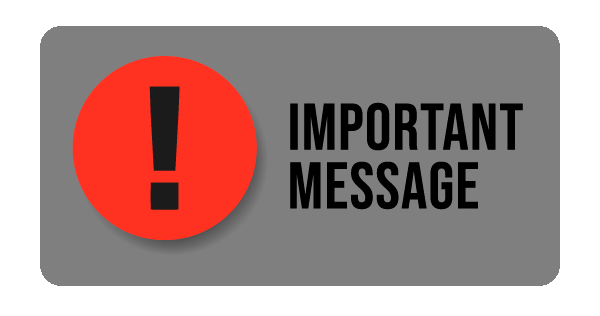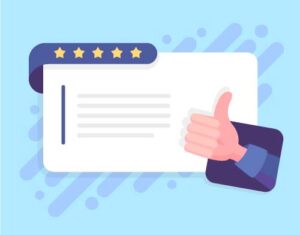Amid a rise in messaging apps email is far from dead. In fact, it continues to thrive. Small- and medium-sized businesses that take advantage of that can turn their email campaigns into finely tuned lead generation machines.
More than 90% of people over the age of 15 use email, according to OptinMonster. And 99% of email users check their inboxes every day. In marketing and lead generation, you won’t see numbers like that anywhere else. Email remains one of the best options in your business’s prospect engagement toolbox — if you’re using it correctly.
What is an email sequence?
Often, using it correctly means building a targeted sequence that nurtures prospects and helps to move them along the buyer journey.
Simply put, a sequence is a series of emails that sell the prospect on your brand or services. You’re taking the lead’s hand and walking him or her step by step from the earliest stages of interest to the point where it’s clear you’re the best choice.
So who sends all of these emails?
Sending an email sequence to a few dozen or even hundreds of prospects can be time-consuming, to say the least. So how do businesses do it? Typically, with their CRMs or platforms built for email automation. Most CRMs have email sequencing tools built in to help you maintain strong relationships with leads and customers. Or you could use a tool like MailChimp, which was built specifically for sending email campaigns.
What does an email sequence look like?
The ideal email sequence is planned down to each and every last detail. Which emoji do you include in the subject line? Or do you include one at all? Should you open with “Hello” or “Hi?” These subtle changes can make big differences in how people respond to your sequence. Luckily, you can determine which emails work best by comparing responses to different templates and choosing the best ones!
So how do you even start building yours? Let’s take a look at the various email templates your sequence should include:
1. The “Welcome” Email

Your first email should be a “Welcome Email.” The prospect should already be aware of your business, but here is where you make the connection more personal if you haven’t already through channels such as chat. This is where you say hello and, if applicable, provide the information the individual signed up to receive.
Are they looking for information on the siding materials you offer? Or a list of the legal services your firm provides? Maybe a course list from your trade school? Whatever the prospect is looking for from your business, provide it upfront in your welcome email.
Remember, keep this email and each one in the sequence short and sweet. People aren’t opening their inboxes to read novellas. They’re looking for information. Here’s where you make an impression by providing it in a fast, professional, and personalized way.
2. The “Problem-Solution” Email
Sales copy often takes on a pretty simple formula: You have a problem and we can solve it. This happens for a good reason. That is because it works.
If you can speak directly to the prospect’s problem off the bat, you’re showing that you can relate to him or her. And by following up with a solution, you prove that you can help as well. You’re offering assistance from a place of understanding, and that’s a powerful message for your prospects to hear. If you can do that in around 200 words or less, you have yourself a great “Problem-Solution” email. Here are three steps to building this email:
- Highlight the problem.
- Explain what’s needed to solve the problem.
- Show that you can solve it.
3. The “Urgency” Email
It’s time to get a little more direct and you can do that by employing a bit of urgency in your copy.
What does the prospect lose by not setting an appointment now rather than later? Urgency is a proven persuasion tactic. If there’s interest in your business, leveraging this can help you make the case in your email campaign
Close the email out with a clear CTA that the reader can click to set an appointment.
4. The “Testimonial” Email
You can make the case well, but you know who might be able to make it even better? Your prospect’s peers.
Explain that you understand the prospect is busy and want to leave him or her with this quote from or video of an industry peer. Social proof, like urgency, is a powerful persuasion tactic. It illustrates just how well your service or product can work for others like your prospect.
Make sure to include a clear and obvious CTA at the bottom of this email as well to give readers a place to click.
Nurturing, not annoying
After a set number of emails, you should give prospects a break. Overdoing it can actually turn them off from doing business with you. Instead, it’s important to find the right balance between nurturing and annoying your prospects. Email sequences can vary in length. Anywhere from three to six emails may work, depending on who you’re speaking to. Some campaigns will begin to transition into more direct sales asks now. Others will continue nurturing prospects with variations on the problem-solution format.
For example, you can write an email that acknowledges that you understand the problem isn’t the prospect’s fault. These things happen, and you’re just here to help. Or you can write an email illustrating how your service can help at various points in the future. For example, three months from now or six months from now, or one year from now you’ll be enjoying “X” thanks to your purchase!
With the right email sequences and some cool-down periods between each one, it’s easy to strike that balance. And when you can do, you can turn an ageless wonder like email into a consistent lead generation tool for your business.






